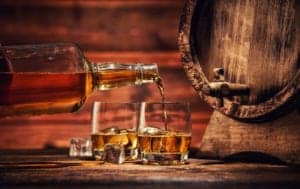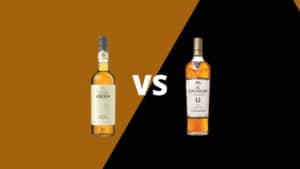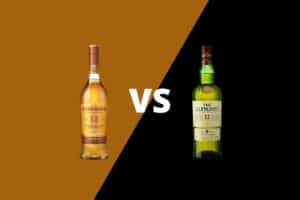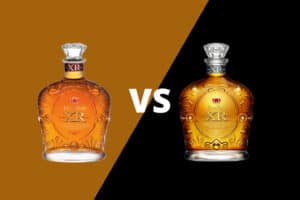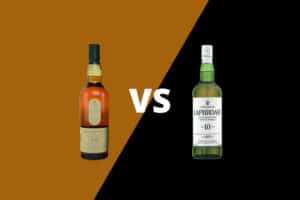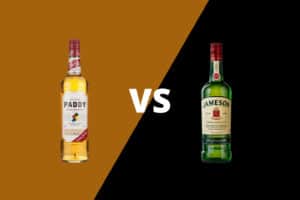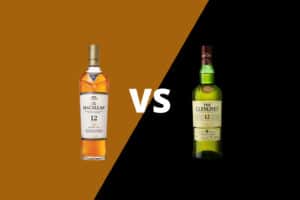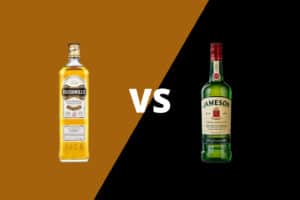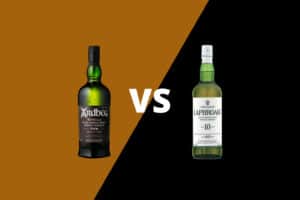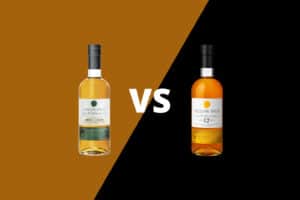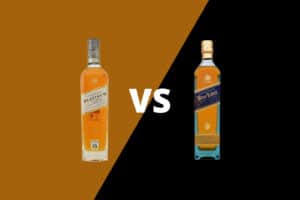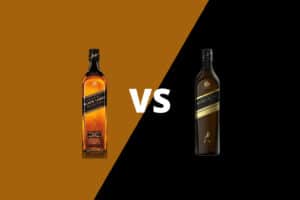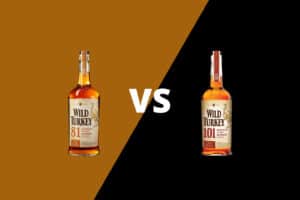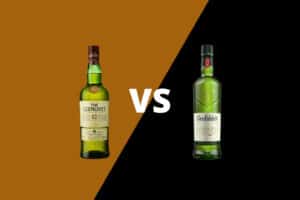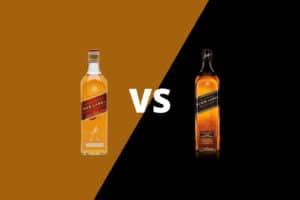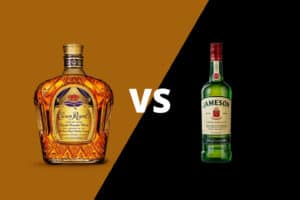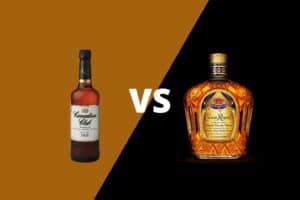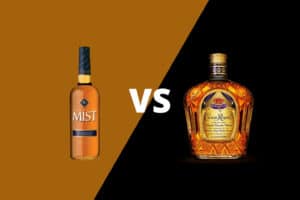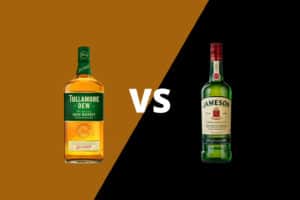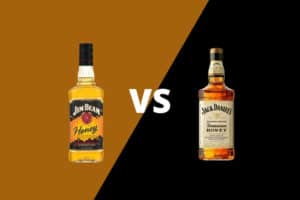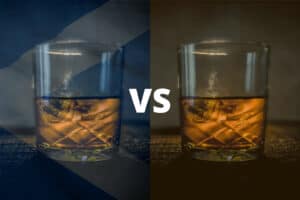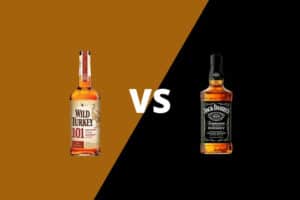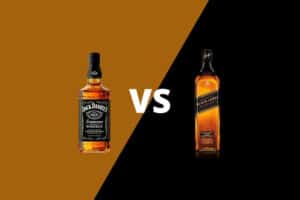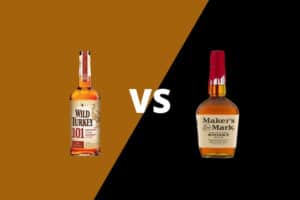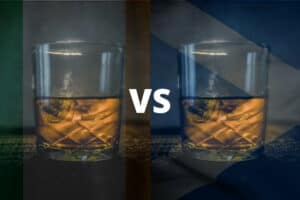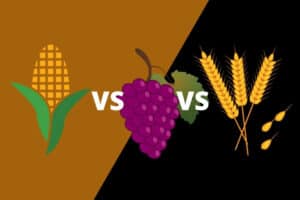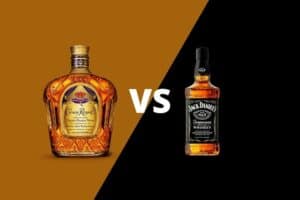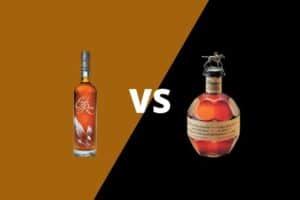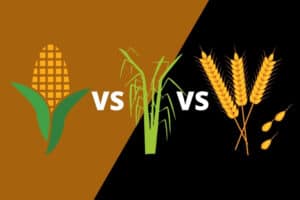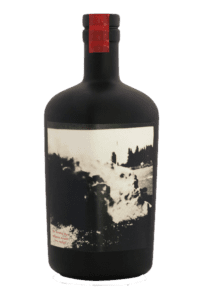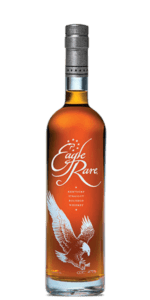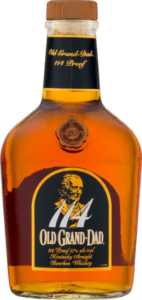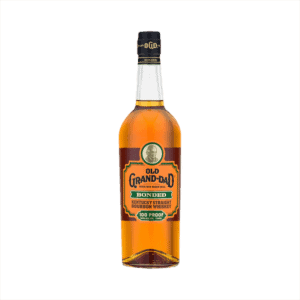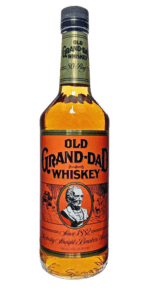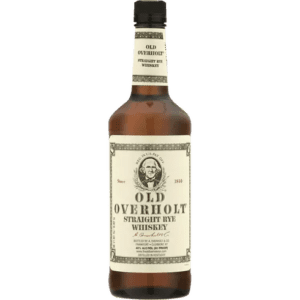Consider this your Bourbon 101 course for the semester…
Newcomers to the bourbon category can be intimidated by the terminology. And there is tons of misinformation and misconceptions perpetuated online for those looking to learn more about the distilled spirit we know as bourbon.
You’ve got questions. We’ve got answers.
We’re hoping to set the record straight by helping you understand more about whiskey, the specific American whiskey product called bourbon and the difference between bourbon and other types of spirits made at home and abroad.
In this post, we’ll examine some of the most commonly asked questions to help you order confidently the next time you’re with a whiskey crowd. By knowing what a true bourbon is, you’ll be able to know exactly what to expect in your glass.
Table of Contents
What is the history of bourbon?
In colonial America, beverages like wine, brandy and rum were the drinks of choice. Along the East Coast, shipments from Europe and the Caribbean supported the domestic beverage trade.
But once settlers headed west across the Allegheny Mountains, access to imported beverages became harder to come across. In addition, infrequent resupply from more established coastal communities meant settlers were on their own.
These settlers had to make do with the ingredients they had available to them, including excess grain from harvest and other fermentable fruits like apples that grew in the area — thank you very much, Johnny Appleseed. They used grain to make beer and apples to make cider. But in a time before refrigeration, beer and cider could easily spoil.
Of course, the hardworking folks of the frontier couldn’t afford to waste any of their hard-earned resources. So by distilling beer and cider, they could preserve their harvest by producing a shelf-stable product that could last almost indefinitely in a sound container.
Distilling hard apple cider gives you apple brandy, affectionately known as applejack in parts of America that traditionally produced the drink. And by distilling beer or fermented grains, you end up with whiskey.
In Western Pennsylvania, the Maryland Panhandle and Eastern Ohio, the grain of choice being harvested was often rye — a hearty grain that thrived in the mountainous terrain’s harsh winters and rugged landscapes. But as settlers continued their expansion westward into the Kentucky grasslands, corn became the crop of choice.
Where did the term Bourbon originate?
To differentiate between the rye whiskey made in the Monongahela River basin from the new style, the term bourbon was coined to describe this new style of whiskey that contained sweetness from the introduction of corn to the mash bill — or list of grain ingredients. Over the decades, it described a distinctive product considered a sub-category of the overall whiskey spirit type.
The origin of this term is the topic of debate among whiskey scholars. Some point to Bourbon County, Kentucky, where an essential checkpoint in the ferrying of whiskey down the Ohio River on its way to the Mississippi River was rumored to have stamped the word ‘Bourbon’ onto barrels making their way downstream. Or, it may have been named after Bourbon Street in the delta city of New Orleans — the destination for many of the barrels coming downstream. After all, Bourbon Street was always a great place to enjoy a glass of bourbon!
Bourbon could have been named after the Bourbon Royal Family of France — a popular group in the newly formed United States after the Revolutionary War thanks to their support for the American cause.
What are bourbon barrels made of?
After its trip down the Mississippi, the whiskey tasted in New Orleans would have been more pleasant than when it was distilled in Kentucky. At the time, most whiskey was sold as ‘common whiskey’ — a term that described the unaged clear spirit off the still. In the early 1800s, it was often sold as a bulk commodity item, the way you would sell corn or wheat, with little differentiation between producers.
The evolution into the dark, aged spirit we know today is thanks to the influence of oak barrels on the liquid inside.
Wooden casks were the shipping container of choice at the time. Wood was plentiful throughout the frontier, and wooden barrels were watertight, easily transported by rolling them over the ground and could be stacked on wagons and steamboats.
Oak was a natural choice for cooperage — the act of making barrels. The oak tree is ubiquitous across North American woodlands. Its tight-grained cellular structure gives it watertight capabilities, and its straight-growing trunks and limbs are ideally suited for barrel making.
Why do they burn the inside of whiskey barrels?
As the shipping of whiskey from Kentucky down the Ohio and Mississippi rivers to the port city of New Orleans became more prevalent, whiskey makers and merchants began to demand more barrels. Initially, most of these barrels would have been purchased on the secondary market. Wooden barrels were not only popular with beer, wine and spirits makers like they are today. Back then, barrels were used to ship all sorts of products, from nails to pickled herring.
To prevent flavors or contaminants from tainting the liquid inside, bourbon distillers and merchants began to burn the insides of the barrels. Using charred oak barrels ensured that the liquid inside did not pick up any of the flavors of whatever was previously stored in the barrel.
As the practice of wood barrel transportation became more common, merchants receiving the goods in New Orleans and markets along the East Coast began to realize the flavor of the whiskey stored, transported and matured in these charred oak containers was smoother and more mellow than the unaged clear white dog whiskey off the still.
In the mid-19th century, innovators seized on this trend to systematically improve the flavor profile of bourbon and other American whiskeys using charred oak barrel maturation. Dr. James C. Crow was a Scottish immigrant who is given credit for helping to improve American whiskey during that period. In addition to creating the sour mash method, pioneering the use of column distillation in bourbon making, advancing scientific advancements in proofing and testing the alkalinity, sugar levels, and pH balance of mashes, he was also a pioneer in barrel maturation.
His Old Crow bourbon was one of the first whiskeys to be asked for by name — an early example of what we would call brand recognition today. The ‘Old’ in Old Crow was a reference to barrel maturation — a practice not uniformly recognized in whiskey production at the time. In this way, Old Crow differentiated itself from the unaged ‘common whiskey’ available in bars, taverns and general stores across the country.
Old Crow was one of the most sought-after commodities for both the Northern and Southern armies during the Civil War. It was a favorite of General Ulysses S. Grant. In defense of legislators who called Grant a drunkard, it was Old Crow that President Abraham Lincoln referred to when he asked, ‘Can either of you tell me where General Grant procures his whiskey? Because, if I can find out, I will send every general in the field a barrel of it!”
Why are bourbon barrels only used once?
Today’s definition of bourbon was a direct result of the United States’ experiment in alcohol prohibition.
The practice of maturing bourbon in new charred oak barrels was not uniform until after the repeal of Prohibition, when legislation on the laws on producing and selling alcoholic beverages was updated. As a result, standards were passed that mandated the use of new charred oak barrels in the production of bourbon, rye and other American whiskeys.
This legislation was introduced to appease the powerful timber industry and cooper’s unions. By ensuring distillers were required to use new barrels, legislators were able to gain crucial support for the legislation to overturn Prohibition.
The 21st Amendment to the Constitution was ratified in 1933, honoring a campaign promise from the newly elected President Franklin D. Roosevelt.
There were a lot of thirsty Americans.
To lay the groundwork for the bonanza to follow, the government set forth rules governing the production of various alcoholic beverages. These codes are reflected in today’s standards of identity, enforced by the U.S. Tobacco and Alcohol Tax and Trade Bureau — or TTB.
The standards for distilled spirits contain rules governing the processes used to make products labeled as whiskey, bourbon, rye whiskey, corn whiskey and other distilled spirits. The bourbon industry must follow specific rules to ensure their products don’t run afoul of TTB regulation.
Because new American charred oak barrels were specified in these regulations, used or uncharred barrels cannot be used to make bourbon.
What happens to the bourbon barrel after it’s used?
New American charred oak barrels must be used for bourbon, rye and many other forms of American whiskeys. But used and uncharred barrels may be used for other types of spirits, including unspecified ‘whiskey,’ corn whiskey, blended whiskey, brandy and applejack.
For this reason, bourbon barrels enjoy a healthy life on the secondary market. After being used for bourbon, the barrels are dumped and then sold to brokers. As a result, they often find new life in other countries, where producers of Canadian whisky, Scotch whisky, Irish whiskey, Cognac, Tequila and other types of distilled spirits utilize them to make their beverages. They are also becoming prevalent in the craft brewing scene, where brewers mature stouts, ales and other types of beer to give them the signature sweet vanilla notes associated with bourbon barrels.
What happens inside a bourbon barrel?
When bourbon is distilled, it comes off the still as a clear, unaged spirit known to distillers as a white dog or new make bourbon. According to the TTB’s standards, bourbon can be distilled to 160-proof, or 80 percent alcohol by volume.
While it contains the ubiquitous sweet corn notes associated with bourbon, this clear, fiery, raw spirit does not have the color or flavor most modern bourbon fans recognize. Instead, bourbon whiskey receives much of its flavor and all of its color from interaction with oak barrels and oxygen during the maturation phase.
TTB regulations require bourbon to be aged at under 125-proof. So, unless the bourbon is distilled to 125-proof or below, the distiller must proof down the new make bourbon using water. Then the whiskey is dumped, poured or racked into new American oak barrels.
Most barrels used in bourbon production are the standard 53-gallon barrels most bourbon aficionados recognize from visiting distilleries or viewing social media. But bourbon barrel sizes are not regulated. Many craft distillers utilize smaller barrels — especially during the first few years after opening — to quickly turn over products and generate revenue. Because smaller casks have more surface area in proportion to liquid, more flavor is extracted from the wood. However, be wary of claims that smaller casks age whiskey faster — or that months in a smaller cask equal years in a large barrel. The notes from small casks are often wild and intense, and nothing but time replicates the slow mellowing process that takes place between the red and char layers in the oak staves.
Inside the barrel, the liquid spirit interacts with the charred layer of wood, which performs a form of charcoal filtration — removing harsh congeners, fatty oils, methyl alcohols and other impurities. The red layer beneath the char is most responsible for giving bourbon its signature reddish-brown color and vanilla flavor. In addition, oxidation smooths out the spirit and helps induce chemical reactions that introduce other flavor compounds.
As the liquid evaporates, it either increases or decreases in alcohol content — the reason there are so many bottling strengths for barrel-proof bourbon products. Single barrel bourbons can be bottled at cask strength or diluted to a minimum strength of 80-proof — the minimum proof bourbon can be bottled.
What is bourbon made from?
Let’s talk about mash bills.
As with maturation, bourbon mash bills — aka mixture of grains used to create a fermentable liquid for the fermentation process — were not regulated prior to Prohibition. Thus, while bourbon described the ‘new style’ of whiskey popularized in Kentucky that utilized corn as an ingredient, products that might be considered rye whiskey, blended whiskey or bourbon today were often interchangeably described as bourbon in the past.
In the regulations that followed the repeal of Prohibition, the production of bourbon was codified. Today, bourbon describes a product made in the United States using at least 51 percent corn in the mash bill. The rest of the grains are considered flavoring grains or secondary grains and are up to the distiller’s discretion. These often include rye, malted barley and wheat.
Popular styles of bourbon reflect the secondary grain profile. This helps explain terms like wheated bourbon and high rye bourbon.
Does bourbon have to be made in Kentucky?
No.
According to U.S. standards of identity and international trade agreement, bourbon whiskey can only be made in the United States. But while Kentucky remains the No. 1 state in both production volume and sales value, any state or territory in the United States can produce bourbon.
Bourbon’s association with Kentucky is historical in context, and following Prohibition and through bourbon’s original high point after World War II, nearly all of the bourbon produced was from Kentucky. Large industrial facilities were built to quench America’s thirst, and the legal structure of the early three-tiered system of alcohol production, sales and distribution edged out smaller producers in favor of large, consolidated entities.
As whiskey in general and bourbon, in particular, began to enjoy a renaissance starting in the 1990s, states began to loosen restrictions on alcohol production to make small-scale distillation possible. As a result, the modern craft bourbon scene has found bourbons made everywhere from Maine to Maui.
Today, bourbon drinkers can enjoy regional riffs on a Kentucky classic.
How long is bourbon matured?
Bourbon fans might be surprised to know there is no mandated minimum maturation period for bourbon. Producers are permitted to mature spirit for minutes in a new charred oak container and call it bourbon.
However, the logistics and costs of acquiring new oak containers each time make this practice unpractical for most bourbon producers.
What are straight whiskeys?
Straight whiskey is a term regulated by the TTB. It is a consumer protection that allows customers to know how long their product has been matured.
To carry the term Straight Bourbon on the label, the product must be matured for a minimum of two years in new charred American oak barrels. Straight bourbon products under four years old are technically required to carry an age statement — but there are questions within the bourbon industry as to how strictly that is enforced. For most bourbon brands, it is safe to assume a Straight Bourbon Whiskey product without an age statement is about four to six years old.
Bourbons that carry an age statement — i.e., 8 years old, 10-year, etc. — must prove the youngest barrel in the batch is at least that old. For example, for a product labeled as six years old, the youngest barrel might be six years, but blenders often utilize much older barrels to give the blend a more robust flavor profile.
What is bottled-in-bond?
The Bottled in Bond Act of 1897 is considered the first consumer protection enacted by the United States Congress. It was created to stop people from claiming their products were aged longer than they actually were or adding things like dyes, caramel or syrups to make their products taste or look more mature.
What does bourbon taste like?
Just like bread, whiskey is a reflection of its grain ingredients.
Bourbon is known for its corn sweetness. In contrast, rye whiskey is known for its spicy character derived from the spicy rye grain and single malt is known for its signature herbal, nutty character.
Compared to other forms of whiskey, bourbon is considered bold, flavorful and robust — a reflection of its use of new American charred oak during maturation. This process gives it the recognizable vanilla and baking spices flavor.
Within this construct, bourbon expressions are only limited by the distiller’s imagination. Adding wheat to the mash will give it a smoother, rounded flavor. A long time in the barrel will give it more complexity and maturity. Adding other grains like quinoa or buckwheat will introduce new and unique flavors. This is why each bourbon bottle on the shelf of your favorite whiskey bar can contain a one-of-a-kind experience.
How to Really Drink Bourbon?
In the words of Jim Beam Master Distiller Fred Noe: “Any damn way you please.”
Whiskey snobs might turn their nose at bourbon and coke, but everyone’s palate is different. Some prefer a well-matured bourbon neat in a snifter or with a few pieces of ice in a rocks glass. Others enjoy their whiskey in a highball or with a splash of mineral water to open up the nose. And there is a new generation of craft cocktail bartenders and mixologists pushing the boundaries of the bourbon experience.
Is bourbon a whiskey or brandy?
Glad you asked. We actually created some relevant content below.













